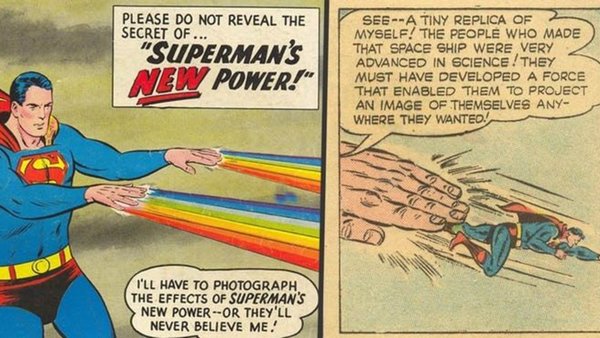8 Terrible Mistakes That Almost Ruined Superman For Everyone
Evil Superman had a good run, but don't you think he's gotten a bit stale now?

Superman was DC's first ever superhero, and has remained the company's most pivotal character since he was introduced in the pages of Action Comics #1 all the way back in 1938.
And contrary to what edgy edgelords may argue, Superman is both awesome and cool, actually, and not for the reasons other superheroes are. There's a certain uniqueness to the character, in that he brings a message of hope and goodness that goes beyond the kind usually seen elsewhere.
Kal-El is quite possibly the most powerful figure on planet Earth, but he chooses to use his gifts to uplift those around him, always believing in the best of humanity and willing to put everything on the line to protect his adoptive world even when it comes at a great personal cost.
This in mind, you'd think that Supes' most enduring qualities would be easy enough to retain throughout the decades. After all, they're what has largely endeared the character to the masses since his creation; echoing that formula, albeit with obvious and necessary innovations now and then, should be an easy enough thing, right?
Well, nah. Not really. Like all comic book characters, Superman has suffered more than just the occasional bungling at the hands of a misguided writer or creative. Whether on the page or off it, people just keep finding more and more creative ways to mess up the character, and they don't look like stopping anytime soon...
8. Pre-Crisis Superman's Expanding Powers And Continuity

The Silver Age of Comics was a bit of a wild time. Okay so "a bit" might be putting things lightly (you wouldn't describe DC having to limit their monthly output of comics featuring gorillas as "a bit", would you), but whatever, the point is that things were pretty weird. Great in many ways, but also incredibly, ridiculously weird.
DC in particular got up to some truly wild things during the fifties and sixties, which stemmed from a mix of having to appease the Comics Code Authority (thus leaning into more outlandish material), and also the sci-fi craze dominating wider media. Superman, unsurprisingly, was right at the centre.
As Grant Morrison details in their expert study of superhero fiction, Supergods, the Man of Steel transitioned from the working class, anti-establishment hero seen in the 1940s, to one whose stories entailed, "super-science fiction about how it felt to be twelve".

Superman rapidly developed an expanding arsenal of super-powers and supporting characters, each crazier and more colourful than the last, until DC were left with a disparate continuity that eventually had to be axed in 1985's Crisis on Infinite Earths. Crisis gave way to John Byrne's Man of Steel comics, which reimagined Supes with a vision that married the best of the Golden, Silver and Bronze Age depictions, to give way to a version of the character many readers would call definitive.
And, to be clear, the Silver Age Superman books absolutely did enrich much of Kal-El's mythology. The issue is that the contemporary understanding of Superman as we know him would never conjure miniature versions of himself to fight crime, or shapeshift, or wipe people's memories with a kiss. The character has to be vulnerable in some ways, which is thankfully a lesson DC's creators applied to Supes post-Crisis.